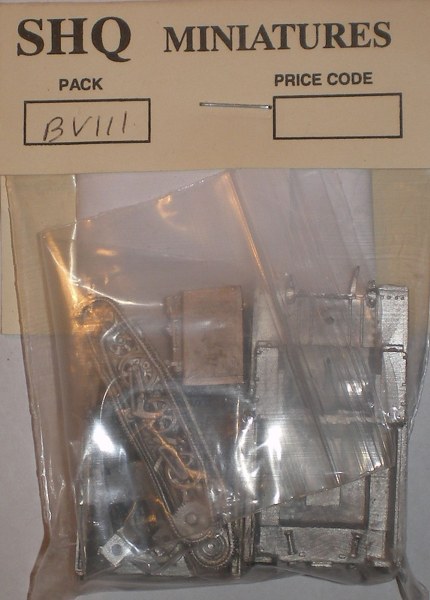
Box Art Dragon Light Tractor Mk.III
 Box Art Dragon Light Tractor Mk.III |
| DBTyp | Modell | |
| Basistyp | Vickers Light Tank Mk I-V Universal Carrier | (Universal Carrier:) http://ftr.wot-news.com/2013/10/27/universal-carrier-in-german-service/ http://forum.warthunder.com/index.php?/topic/419097-universal-carrier/ Übergeordnete Kategorie: Vickers Light Tanks and Tankettes, Carden-Loyd Tankettes |
| Kithersteller | SHQ | |
| Material | Metall | |
| Herstellerland | GB | Übergeordnete Kategorie: Europa |
| Betreiberland | GB Deutsch Indien China Finnland Thailand | Übergeordnete Kategorie: Europa, Asien |
| Bauepoche | 0 (ungebaut) | |
| Themen | PzFzg Schlepper | (Bodengerät:) Fahrzeuge Übergeordnete Kategorie: Fahrzeug, Bodengerät, Arbeitsmaschine |
| Betriebsaera | Interwar Wk2 | |
| Scale | 1/76 | |
| TextDE | After 1918, with the tank's success in overcoming bad terrain in mind, the British Army looked at tracked towing vehicles for artillery, and in 1922, the Royal Carriage Department at Woolwich Arsenal built the first Dragon. It used a suspension and track unit based on the current Vickers medium tank, could carry 10 men in addition to the driver and towed an 18pdr field gun and limber at 12 mph. This was soon replaced by the MkII with a more powerful engine, and then supplemented by the MkIII with gear ratios changed to permit towing medium guns of 5in and 6in calibre. However, in 1936 a policy decision was made to revert to wheeled vehicles for artillery towing, and so the Dragon was a dead-end development. (594) A variant of the Vickers 6-ton was the cargo vehicle Dragon Medium Mk. IV. Some were exported, many more converted from std tanks and exported. The Dragon Mk III derived its name from its purpose. Designed as an artillery tractor the 'Drag-gun' was used by the BEF in France and Belgium in 1940. Looking very like a Universal Carrier, the Dragon was used to tow smaller artillery pieces like the 3.7inch howitzer. Later Dragons such as the MK IV were used for larger guns. Following the retreat to Dunkirk in 1940 much of the BEF's Dragons were abandonded or destroyed in France. The Mk III was used mainly between 1939 and 1941.(595) Attention: The model is the light dragon. Much of history is about Medium Dragon. Some of the Siam Dragons were AA vehicles with 40mm Pompom AA gun. In den dt.Beutekennblättern geführt als l Art S Mk II 603 (e) | |
| BaseVehicle | Bodengerät | (Bodengerät:) Fahrzeuge |
| > Gleiche Basis, Schwesterschiffe etc. zu Vickers Light Tank Mk I-V( Anzeigen/verstecken: [+]) | ||
| Modell PzSpähWg VCL 701(b) | 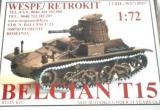 ex Belgische T15 Tankette (org by Vickers) ex Belgische T15 Tankette (org by Vickers) | |
| Modell Vickers Light Tank Mk IV | 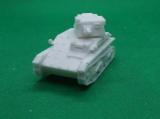 Deutsche Beutebez. PzKpfw 734(e), PzKpfw Mk IV 734(e), Panzerjäger (Sfl.) CL 801(e) Light Tank Mk IV sowie Panzerjäger auf Sfl. Deutsche Beutebez. PzKpfw 734(e), PzKpfw Mk IV 734(e), Panzerjäger (Sfl.) CL 801(e) Light Tank Mk IV sowie Panzerjäger auf Sfl. | |
| Typdefinition Vickers Light Tank M1936 Dutchman |  Chassis like Mark IV but with an hexagonal turret and armament of a Mark II. Some call it Mark IIIB Chassis like Mark IV but with an hexagonal turret and armament of a Mark II. Some call it Mark IIIB | |
| > Gleiche Basis, Schwesterschiffe etc. zu Universal Carrier( Anzeigen/verstecken: [-]) | ||
| Modell Praying Mantis | 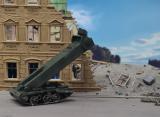 | |
| Modell Universal Carrier II | ||
| Modell Universal Carrier I Mk.I with Boys AT Rifle | 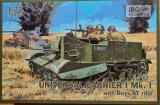 Beutebezeichnungen Bren Carrier 731(e)|Bren Carrier 732(e) | leichter Artillerieschlepper Mo 601 (e) | gp MG Tr CL 730(e) Beutebezeichnungen Bren Carrier 731(e)|Bren Carrier 732(e) | leichter Artillerieschlepper Mo 601 (e) | gp MG Tr CL 730(e) | |
| Modell Universal Carrier Vickers |  | |
| Modell Universal Carrier 2 inch mortrar |  | |
| Modell Universal Carrier 50cal mg |  | |
| Modell Universal Carrier Wasp 1 | 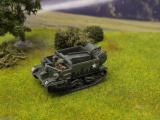 class=Universal Carrier class=Universal Carrier | |
| Modell Universal Carrier Wasp 2 |  | |
| Modell Universal Carrier AOP |  | |
| Modell Universal Carrier 3 inch mortar & Bren Mg | 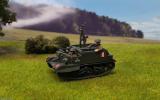 | |
| Modell Universal Carrier 2-pounder ATG | ||
| Modell Universal Carrier Pak36 | ||
| Modell Univ. Carrier als PzJg Bren 731(e), RPB-54 PzBüchse (2x) | ||
| Typdefinition 2cm Flak 30 und 38 auf Bren-Carrier (e) Feldumbau | ||
| Modell Carrier No2 Mk I 2pdr. SPG |  Bild siehe http://www.felixshara.com/carrier-no2-mk-i-2pdr-spg/ aber in deutschen Diensten auch in http://ftr.wot-news.com/2013/10/27/universal-carrier-in-german-service/ ... Bild siehe http://www.felixshara.com/carrier-no2-mk-i-2pdr-spg/ aber in deutschen Diensten auch in http://ftr.wot-news.com/2013/10/27/universal-carrier-in-german-service/ ... | |
| Typdefinition Ford T16 | Ford Kanada erst in Lizenz der brit.Vickers, dann durch Ford USA drastisch geändert, schließlich vereinheitlicht mit Ford Kanada. Viele kanadische als "Carrier 4.2-Inch Mortar T16 Mark 1" | |
| Typdefinition Pz Begl Fz UC | Panzergrenadier Begleit Fahrzeug Universal Carrier - der ewrste Schweizer APC | |
| lime: | Hervorragende Quelle, kaum Fehler |
| green: | Sehr gute Quelle, kaum Fehler |
| schwarz oder blau: | Qualität der Quelle noch nicht angegeben |
| orange: | Gute Quelle, einige Fehler |
| red: | Quelle enthält mglw. einige korrekte Angaben, ist in jedem Fall einzeln zu prüfen |